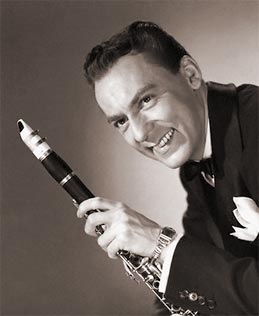
Fifty years ago today, only one jazz recording session took place in the U.S. More than six hours after news broke that President Kennedy had been assassinated in Dallas, Woody Herman decided there wasn't much point in worrying about what he couldn't control and moved forward with the second recording session for what would become Woody Herman 1964 (Philips). Engineer Phil Ramone set up the mikes at his A&R Studios in New York and the band recorded four songs—Jazz Hoot, A Taste of Honey, The Strut and Satin Doll. The next day, as Kennedy's body lay in state at the White House, the band recorded After You've Gone and Cousins.
On that fateful Friday, I was in Mrs. Harris' second grade class at P.S. 187 [pictured above] in Manhattan's Washington Heights. We all admired Mrs. Harris. She was young, pretty and her husband Bob was a local TV weather forecaster. At around 1 p.m., the principal came on the P.A. system—a gray square box that sat mounted on the wall below the clock. She announced that school was dismissed. I don't recall if Mrs. Mandel, the principal, said why, but once we were in the street, I remember being surprised that all the adults had turned into children.
In the days before the Internet and cell phones, information traveled a lot slower, and many adults were standing in tight groups on the sidewalk, completely unaware that school had let out. Back then, even if you were in the second grade, you found your way home by yourself with your friends. The electronics store (that's what they used to call them) on 187th St. was particularly crowded inside and out, since the store's TVs were all on flickering the same channel. Many women were crying, as if all had received the same news—that their sons had been caught by the cops throwing rocks at cars.
Eventually word spread among the children that President Kennedy—the young guy with the square head and half smile whose picture was on the walls of the barber shop, the bakery, the butcher and delicatssen on 187th St.—had been killed. Something about people shooting at him fom the top of a building. All I could think of was my little bright green plastic Army men—the ones frozen in a kneeling position aiming rifles—firing away from the top of our apartment building.
At home, my mom was pretty upset. The TV was on and there were black-and-white images of dazed men in overcoats and hats, Southern women in cat glasses with their hair done up, and a building they said held library books and had a Hertz sign on top. I remember imagining that the President and his wife were the couple who floated down into the convertible on the Hertz ads on TV—"Let Hertz put youuu...in the driver's seat."
By Saturday, the confusing stuff had cleared up thanks to the television, which had remained on through the night. My brother Danny and I watched baffled as Navy soldiers stood at attention on each end of the President's coffin at the White House. Then the President's wife showed up with two kids who looked just like us. That was the turning point for me and my brother. A guy in a frame on the wall was one thing. This was about boys and girls our age.
At that point, I remember prying open my mother's two-wheel grocery wagon. My brother and I put it down on the floor and covered it with a sheet, just like the flag-draped casket. I can't remember how we wound up in my father's Navy uniforms, but thre we were in his blue winter and white summer tops—with the sleeves hitting the floor.
My brother and I stood guard over the sheet-covered wagon, copying what unfolded on TV. Sometime on Sunday, Lee Harvey Oswald was shot on live TV by a guy named Jack Ruby. Ruby ran something we rode on at the park called the Carousel. I didn't quite understand why someone who operated a merry-go-round would do such a bad thing. With Oswald's shooting on live TV, the 1960s began in earnest.
The weekend of November 22—that began 50 years ago today—was my generation's 9/11, a national crisis so large and universally stunning that adults couldn't hide their confusion or fear. A grownup had done something so bad that it was worse than me getting caught in school with Roy's rubber novelty knife or sneaking cookies before dinner.
I have no iea why Woody Herman recorded that Friday and Saturday or why Phil Ramone agreed to come in and let him. Probably tough-guy stuff—nothing should get in the way of music and commerce, and the best way out of a funk is to work through it and all that. Part of me today wonders whether that was a smart decision or if Herman later regretted it.
The music Herman recorded on those confusing and terrifying days in 1963 sounds great—as if nothing at all had happened in the world. And that's what's odd. At a time when the country went into an emotional tailspin, guys in a band were so detached from the mainstream that they just didn't care or were too shocked to think better. Maybe recording was a healthy thing. Or maybe not. Who knows.
At that point, I remember prying open my mother's two-wheel grocery wagon. My brother and I put it down on the floor and covered it with a sheet, just like the flag-draped casket. I can't remember how we wound up in my father's Navy uniforms, but thre we were in his blue winter and white summer tops—with the sleeves hitting the floor.
This story appears courtesy of JazzWax by Marc Myers.
Copyright © 2024. All rights reserved.



























